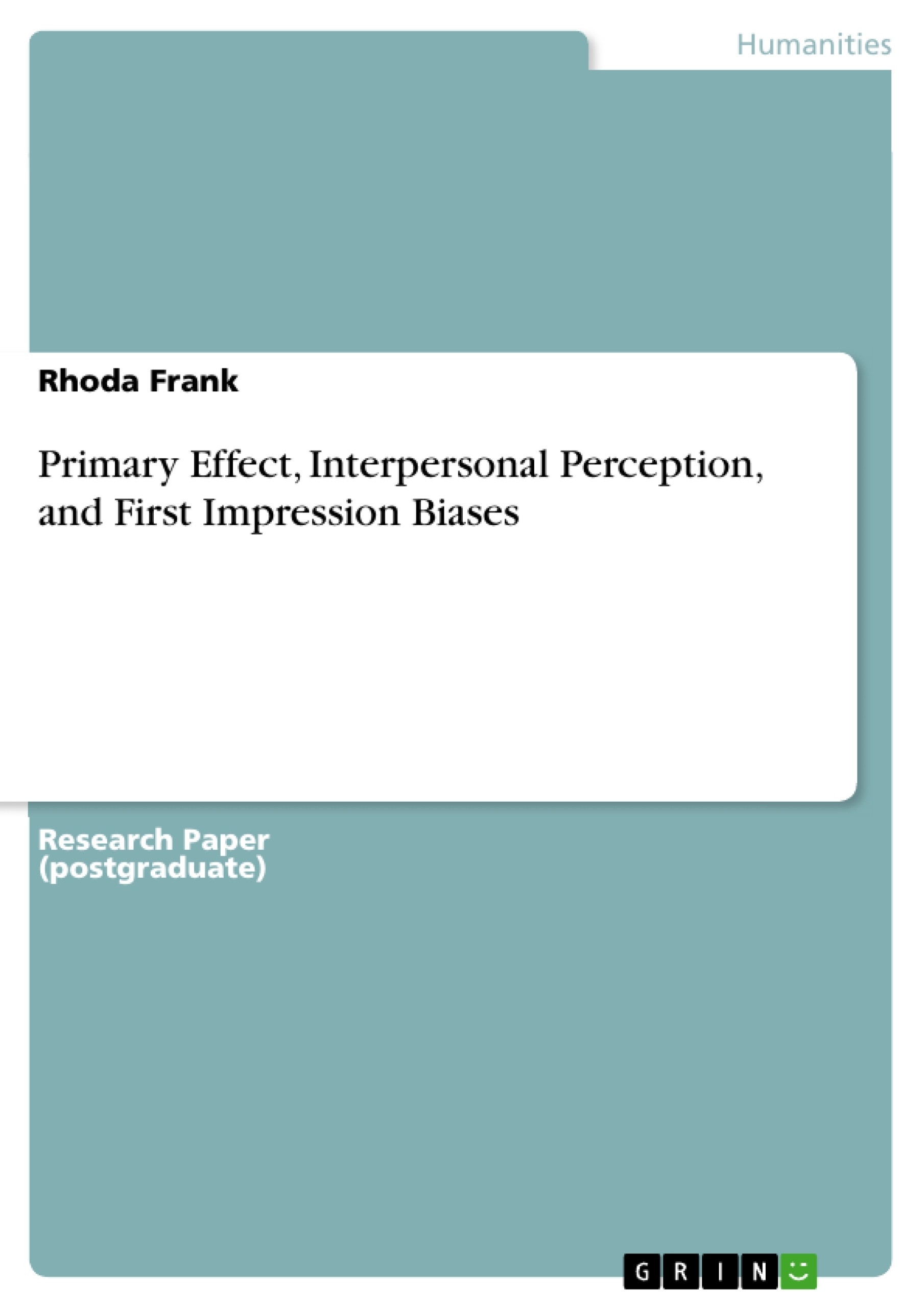Observation is a significant influence on how individuals perceive other people around them. Therefore, perception is selective and will differ from one person to another. The way people perceive things is linked with their inherent characteristics, and it is possible for two people to observe one subject and have different perceptions about the same. The paper, therefore, sought to identify the socio-psychological attitudes aimed at a person’s image assessment and the primary effect impact on the attitude of an individual. The study involved 100 1-4-year undergraduate and 1-2-year graduate students from the Faculty of Psychology of the local university. 88 participants were selected for the second stage of the experiment (44 males, 44 females). The respondents’ age was from between 19-22 years (N = 88, M = 21, SD = 1.5). Questionnaires were administered to the respondents to elicit answers, which were analyzed and informed the conclusions. The study concluded that primary influences perception and it is visible in observation. It was concluded that observation is a purposeful, organized, long-term perception. Expression is also important, in how a person perceives another. The voice of a person also had the same effect on the perception of an individual.
Inhaltsverzeichnis (Table of Contents)
- Abstract
- Introduction
- Literature Review
- Personal Perception Selectivity
- Perception Integrity
- Perception Interpretation
Zielsetzung und Themenschwerpunkte (Objectives and Key Themes)
This paper examines the influence of the primary effect on interpersonal perception and the formation of first impression biases. The study investigates the socio-psychological attitudes involved in image assessment and how the primary effect shapes individual perceptions.
- The role of the primary effect in perception formation.
- The influence of personal perception selectivity on interpersonal communication.
- The significance of perception integrity in creating a meaningful image of another person.
- The impact of perception interpretation in shaping judgments and conclusions about others.
Zusammenfassung der Kapitel (Chapter Summaries)
- Abstract: The paper introduces the research question, which focuses on understanding the influence of the primary effect on interpersonal perception and first impression biases. It outlines the research methodology and summarizes the key findings.
- Introduction: This chapter defines perception in communication theory and differentiates between objective and social perception. It highlights the importance of interpersonal perception in communication and introduces the primary effect as a core concept within this context.
- Literature Review: This section explores the various aspects of perception, including selectivity, integrity, and interpretation. It discusses how these elements are intertwined and their significance in understanding how individuals perceive and interact with others.
Schlüsselwörter (Keywords)
The core concepts and themes of this work center around the primary effect, interpersonal perception, first impression biases, personal perception selectivity, perception interpretation, and perception integrity. The study investigates how these concepts interact and influence how individuals form impressions of others.
- Quote paper
- Rhoda Frank (Author), 2023, Primary Effect, Interpersonal Perception, and First Impression Biases, Munich, GRIN Verlag, https://www.grin.com/document/1363793



